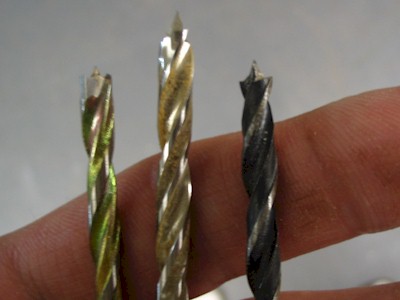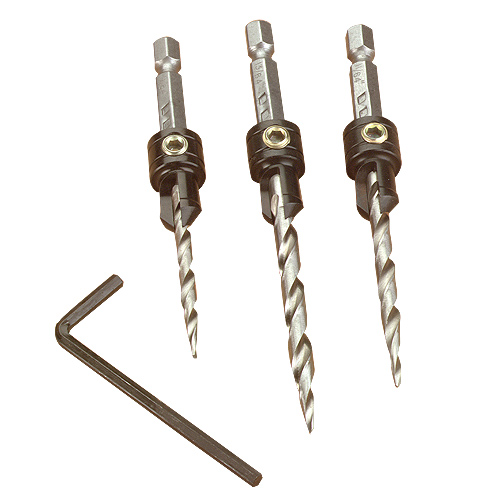My cable service offers more than one thousand channels. I have four movie megaplexes in a 20 minute drive from my house. The Internet can bring me thousands of movies on demand.
So, you can understand why I don’t like to be bored. I have plenty of opportunity to make sure that I never get that way. Woodworking also helps me stay out of that dreaded state or boredom.
That’s why I can’t understand why talking about drills and what they do is called boring. It’s anything but. Whether in a drill press or a hand-held unit, there are dozens of things you can do with the right selection of bits.
Just as with the router, drilling tools are nothing but fancy paperweights without bits. The bits come in a bewildering array of sizes and shapes to do a great number of tasks. Don’t be misled by looking at the selections in the local home improvement center. There, you will typically see your basic twist drill bits which do an OK job on wood and metal. But, if you haven’t tried bits specifically for fine woodworking, well, let me be the first to welcome to you a brave new world!
When it comes to drilling smaller diameter holes in wood, it’s hard to beat the brad point. They look very similar to the regular twist bits, but have a sharp brad point at the business end with two cutting spurs at the outside diameter. These two features allow you to start your drilling without the fear of the bit wandering. And, with the cutting spurs, the hole is very clean. If you are the kind of woodworker who likes to drill your mortises, these are two very important traits you want in your drill bits.
For larger holes, there’s another specialty bit that you should consider – the Forstner bit. These bits feature straight shanks with a larger sized cutting head at the bottom. Forstners excel at cutting smooth, straight holes with flat bottoms. But, not the only thing you get with them. Since the bit is large and the rim of the bit does the cutting, you can bore on an angle, or just use part of the bit to drill an arc. And, if you are looking to mount something like a clock insert, it’s as simple as chucking the right sized bit and drilling until you get the proper depth. Since the cuts are so clean, there’s little – if any – clean up required.
You can also pick up a forstner bit extender, which allows the user to drill deeper into the work. You may not use it every day, but when you need that extra little bit of reach, well, it’s a very handy attachment.
There are also a number of other specialty bits available. For instance, for most countersinks, the drill bits are tapered. It seems like a small thing, but if you are using traditional tapered wood screws, a tapered bit is going to give you excellent thread contact for the entire length of the screw. More thread contact means better holding power.
From there, well, where can you go? Plug cutters? Tenon cutters? Hole saws? Spade bits? Hey, let’s talk about them later. I’ll need something to do the next time I get bored!





Good post Tom.
I consider myself a drill bit freak. I own all the styles you mention plus a few more.
Need a hole? Just tell me what size and how deep. I can tell you how I would do it and if it doesn’t work, we’ll try a different method. 🙂
As a tool salesman for 20 years, I had the opportunity to obtain drill bits (and fastener drive tools) that you see only in catalogs. 🙂
Rog
I’m with Roger. I have all those bits & use them all.
My drill press has been getting a good work out lately since I upgraded the table on it.
Thanks Tom.